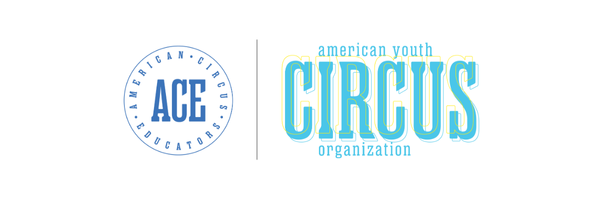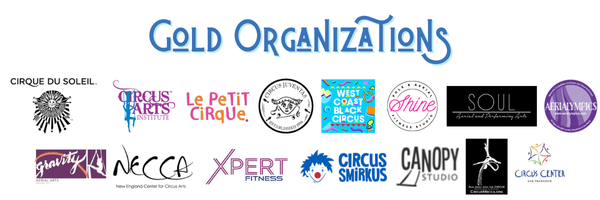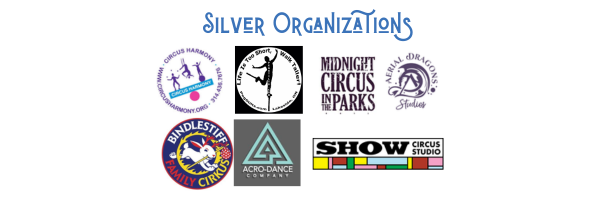We’d love to see the greater aerial world embrace what Teacher Trainings can do in raising our community’s standards.
As the artform of circus and aerial arts continues to grow, so does the need for Teacher Trainings. The more that people want to learn, the more demand there is for instructors. But as we know, not anyone can just jump right into teaching such a technical and physically demanding (and creative!) artform. There’s a lot of information that one needs to have at their fingertips, from safety standards and policies to anatomy and an understanding of functional movement. Then add in hands-on spotting, creative expression, classroom management skills, and the ability to progress your student through giving nuanced and individual feedback…Tackling the multi-faceted craft of being an aerial teacher is not easy! So teacher trainings have become more and more popular, and in our opinion, more necessary as this artform continues to develop and expand.
One very important relationship to think about is between ACCESSIBILITY and SAFETY. These two important values should grow together, in balance. If the accessibility becomes larger than what we as a community are able to keep up with, that’s where you start to see a lot of accidents, injuries, and just plain bad instruction. For those of us who have been in the industry a long time, there’s often a third value brought up. We also want to keep the QUALITY of the work intact. This means not watering down the industry with sub-par technique and instruction. This is another reason we think Teacher Trainings help the greater aerial and circus community.
Aerial Teacher Training Courses have been around in the US for about a decade, however the idea of moving towards a certificate model is relatively new. To us, it’s a really important shift and distinction to be made. The Teacher Training hands-on course is a wonderful way to learn a lot of information that you wouldn’t normally get just from attending classes. This is the behind-the-scenes information that you would only get from experienced coaches who have honed the craft of teaching for years and years and have organized that information into an easy to understand chunks. However, after you leave the course, how (and if) you apply that information is up to the individual.
This is why we have chosen to partner with Born 2 Fly, who offers a comprehensive certificate program with additional practicum hours, mentorship, and ongoing support. The certificate program helps to support the trainee in the transition between LEARNING and APPLYING. It holds the trainee accountable, and uses the idea of the mentor / apprentice relationship to really enhance the process of becoming a qualified instructor. In the certificate program from Born to Fly, there is also an assessment portion, where the trainee films a live class and receives feedback. They then would apply the feedback in the next filmed class. The only way they will receive credit for the certification is if they can show that they’ve APPLIED the concepts that they learned in the training. We hope that this will help to continue to raise the bar in the industry, while simultaneously make it a more fulfilling and enriching process for the trainee.
So what does it mean if someone has completed a Teacher Training Certificate? It tells you that they have an education in the field of aerial arts. Does this automatically mean that you should hire them (if you’re a studio owner)? Or does this mean this person will be your favorite teacher (if you’re a student)? No. It’s a foundation from which that person will grow their career out of. As a community, we can use the idea of the certificate as a supplement, and continue to use references and reputation as tools for finding and hiring quality instructors. Just because someone went to medical school, doesn’t automatically mean they are an amazing doctor. But would you want someone operating on you who never went to medical school? This may be an extreme example, but in a way it’s not too far off. In teaching aerial arts, it’s important to remember that we are responsible for our students’ safety and well-being in a very real way.
There are some who question how the growing popularity of teacher trainings might impact the reputation of qualified instructors who do not take a training. There are many, many amazing instructors out there who have no “credentials” because they have gained all their knowledge through the old-school way of doing things: mentor relationships, years of experience, and figuring things out along the way. This is how many of us learned, because Teacher Trainings were not readily available even as little as 15 years ago. The popularity of the current official training programs credentials does not aim to discredit the master teachers who have earned their reputation through years of hard work and quality instruction. It is more of a response to the HUGE influx of students, studios, and instructors out there who need access to information and mentorship. Aerial arts is a different world than it was back then. Teacher trainings are just one way that our industry has grown in in order to meet the needs of the flourishing world of aerial arts.
Another important thing to highlight about someone who has taken a teacher training course or gone through a certificate program is that it shows that they value the craft of instruction. There are many instructors out there who may be teaching more as a side job to their performing careers and are not necessarily passionate about teaching. Then there are others who will dive into the juicy and creative world of figuring out the best progression and cues for that individual in class who is struggling, and who goes home at night feeling fulfilled (or challenged) by the process and ready to tackle it again the next day. Often the people who attend teacher trainings are showing their commitment to the field of teaching by investing their time and money into their craft, which can show a lot about a person.
With the upsurge of aerial arts in general, this means that more and more teacher trainings are also emerging; this is a normal evolution. Some are concerned with oversaturation of the market. We feel very passionate about teacher trainings, and for us, right now we are focused on helping the aerial world to embrace the idea that trainings and certificates help our industry grow in a healthy and productive way.
It can be difficult to make aerial instruction as a profession financially viable, which is currently a hindrance in our field. There are many instructors who really WANT to attend teacher training programs, but just don’t make enough money through teaching to be able to afford them. This is a problem. We’ve come across certain studio owners who value trainings so much that they either offer incentives to their staff, or they even pay for them to get trained. We’d love to see this sort of mentality spread. Another challenge that comes up, is that with more and more Teacher Trainings being offered, it’s hard to know which trainings will offer a quality and comprehensive program. Here’s some questions you can ask when looking for the program that is best for you.
- Research the background of the company / instructor. What is their training, background, and experience in the field? Does this company / instructor have a good reputation for safety?
- Is the Teacher Training Course comprehensive? Hands-on courses should include information on a myriad of topics, including Safety, Progressions, Spotting Techniques, Class Management, Injury Prevention, Anatomy, Teaching Techniques, and more. Some Teacher Trainings also include basic rigging information for aerialists. A comprehensive program also often points to a well thought out and organized course.
- Does this Teacher Training Program give you options to continue your learning? Are there a variety of levels, apparatus, and modalities that you can study from? This is especially important if you plan on going through a certification route, where each course earns you credits.
- What happens after the hands-on course? Does the program offer you a way to follow up with a certification or mentorship where you are supported in the process of applying what you’ve learned? Will you continue to be able to connect with the course leader and community of students AFTER the course is complete?
- Seek out programs and instructors that align with your aerial focus or style.
Rain Anya and Sarah Bebe Holmes form Paper Doll Militia (@paprdollmilitia). Best known for producing contemporary aerial theatre, they also have run several popular aerial teacher training courses both in the United States and abroad.
Click here to see this article in its full glory in the gorgeously designed Spring 2018 Issue of ACE Digital Magazine.


